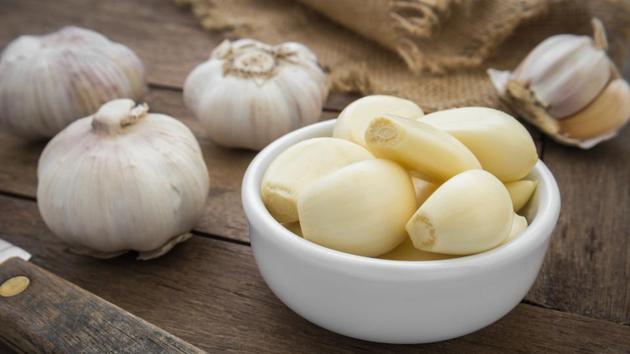Fighting chronic infections? Here’s why you should include garlic in your diet
A study, conducted in Denmark, has found that a compound in garlic when combined with antibiotics can destroy important components in the bacteria’s communication systems.
Garlic can help you fight chronic infections, a study suggests. Ajoene, an active sulphurous compound found in the pungent vegetable, when combined with antibiotics helps break down a bacteria’s defenses.

Researchers from the University of Copenhagen show that the garlic compound is able to destroy important components in the bacteria’s communication systems, which involve regulatory RNA molecules.
‘We really believe this method can lead to treatment of patients, who otherwise have poor prospects. Because chronic infections like cystic fibrosis can be very robust. But now we, together with a private company, have enough knowledge to further develop the garlic drug and test it on patients’, says assistant professor Tim Holm Jakobsen from the Costerton Biofilm Center at the Department of Immunology and Microbiology.
The active garlic compound also damages the protective slimy matrix surrounding the bacteria–the biofilm. When the biofilm is destroyed , both antibiotics and the body’s own immune system are able to attack the bacteria more directly.
The study is the latest addition from a research group headed by professor Michael Givskov, which since 2005 has focussed on garlic’s effect on bacteria. At the time they learned that garlic extract is able to inhibit bacteria, and in 2012 they showed that the sulphurous compound ajoene found in garlic is responsible for the effect.
The new study takes an even closer look and documents ajoene’s ability to inhibit small regulatory RNA molecules in two types of bacteria. “The two types of bacteria we have studied are very important. They are called Staphylococcus aureus and Pseudomonas aeruginosa. They actually belong to two very different bacteria families and are normally fought using different methods. But the garlic compound is able to fight both at once and therefore may prove an effective drug when used together with antibiotics’, says Tim Holm Jakobsen.
Previous studies have shown that garlic appears to offer the most powerful, naturally occurring resistance to bacteria. In addition to inhibiting the bacteria’s RNA molecules, the active garlic compound also damages the protective slimy matrix surrounding the bacteria, the so-called biofilm. When the biofilm is destroyed or weakened, both antibiotics and the body’s own immune system are able to attack the bacteria more directly and thus remove the infection.
The findings have been published in the journal Scientific Reports.
Follow @htlifeandstyle for more
Catch your daily dose of Fashion, Taylor Swift, Health, Festivals, Travel, Relationship, Recipe and all the other Latest Lifestyle News on Hindustan Times Website and APPs.
Catch your daily dose of Fashion, Taylor Swift, Health, Festivals, Travel, Relationship, Recipe and all the other Latest Lifestyle News on Hindustan Times Website and APPs.





